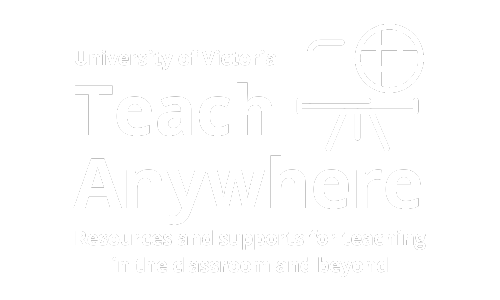These instructions are supplied for using Crowdmark, which is an online, collaborative grading and analytics tool for instructors and TAs. In this guide, you will be taken through how to access and set up your course in Crowdmark, create assessments, grade...
Posts by Category:
Learning and Teaching with Community: Climate Initiatives
About this funding opportunity: Funded by the Business + Higher Education RoundTable, this grant, led by the Community-Engaged Learning Office, supports instructors in any discipline access funds and support for their courses with community-engaged learning projects...
Components of a well-designed syllabus or course outline
No single syllabus format or content applies to every university course. However, a number of components can make the course syllabus more informative, useful and engaging. The course syllabus serves as a contract between you and your students and can help when...
Course Communication and Office Hours
Educational research has shown that student–faculty interactions are important [1]. Therefore, it is essential that you include multiple ways for students to contact you and for you to interact with students. Frequent and quality student–faculty interactions lead to...
Using online strategies to address absences and support accessibility
Instructors are advised to incorporate blended strategies into their in-person courses to address absences and support accessibility.Online strategies can help instructors to: Increase access to course materials and assessments for students in cases where they are...
Teaching in a multi-access room
Familiar teaching strategies might look a bit different in a multi-access classroom, but they have the same underpinning.In a multi-access classroom, you can deliver a lecture to both in-room and remote students, synchronously. You can also engage students through...
Supporting students with multi-access learning
Multi-access courses can provide students with flexibility in terms of accessing their courses. Since this format will be new for many students, this article provides tips and strategies for supporting students in a multi-access course and class.Course Culture Explain...
Spring 2022 Resources
This page will continuously be updated as information is made available. This consolidated resource includes information on instructional modes, LTSI supports and learning technologies, accessibility, COVID contingency planning, strategies for supporting student and...
DEAL Model
The DEAL model was originally developed by Ash & Clayton (2009; 2004) to help students reflect on their service-learning experiences and achieve intended learning outcomes (ILOs). The model involves 3 phases: Describe, Examine, and Articulate Learning. This model...
What? So what? Now What? Framework
Drawn from Kolb’s (1984) experiential learning cycle, this commonly-known framework asks the reflector to describe the situation, articulate why it matters, and what they will do with that information. This describe-analyze-propose action framework does not prescribe...
We are here to help!
Access your LTSI Faculty Support Team & supports in four ways:
We acknowledge and respect the lək̓ʷəŋən peoples on whose traditional territory the University of Victoria stands, and the Songhees, Esquimalt and W̱SÁNEĆ peoples whose historical relationships with the land continue to this day.
